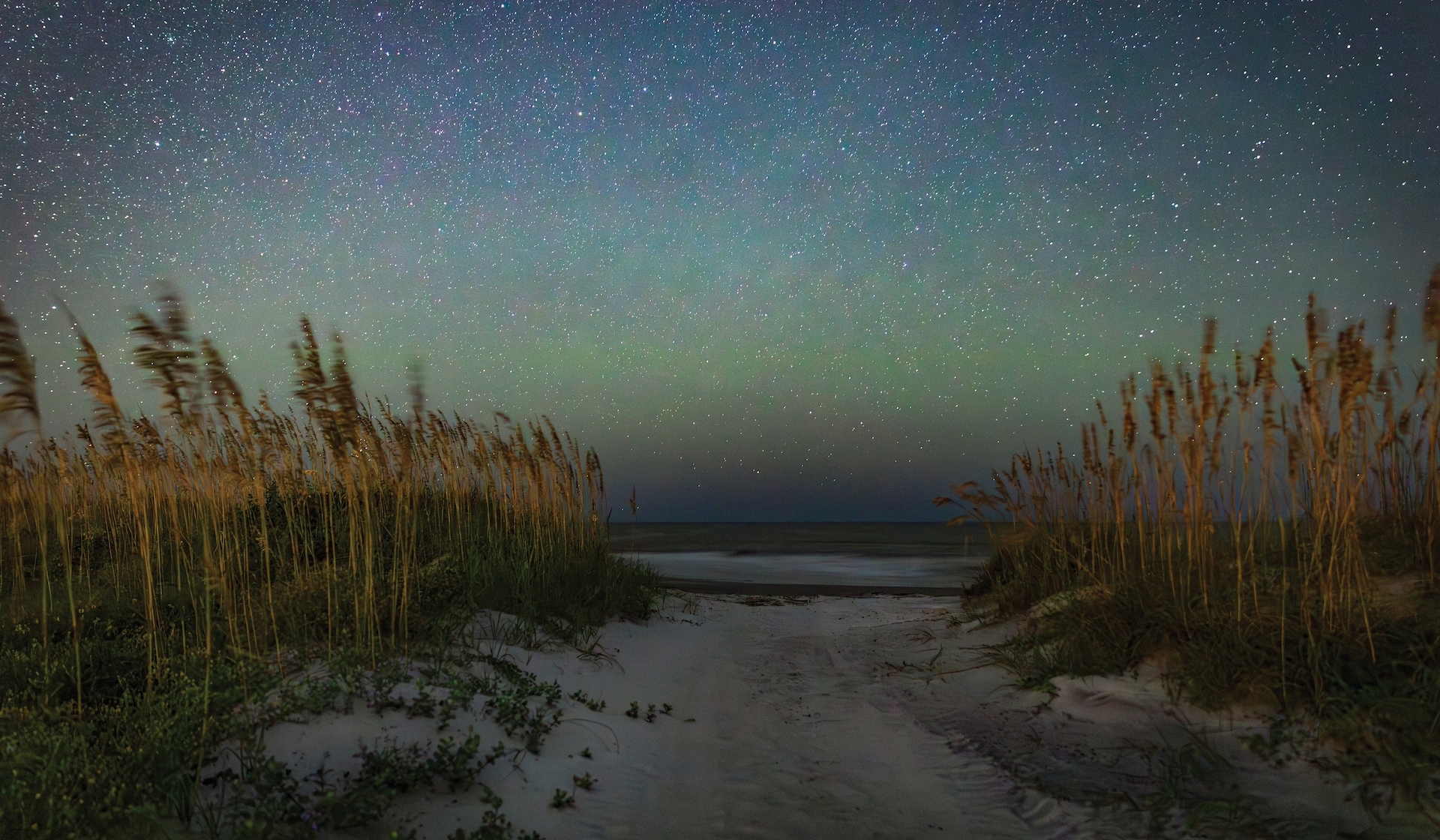Unveiling The Night Sky
A detailed guide to stargazing upon autumn's mysterious celestial wonders
Autumn is the best time of year for stargazing. As the days get shorter, new stars and constellations rise in the eastern sky. Following the autumnal equinox, the Northern Hemisphere tilts away from the sun, resulting in longer nights that continue to lengthen until the winter solstice arrives. The early sunsets have an added benefit: many prominent summer stars and constellations stick around for a few extra months. Warm starry evenings, and generally favorable weather, make autumn stargazing even more pleasant.
WRITTEN IN THE STARS
For those in the Northern Hemisphere, the autumn sky is dominated by the constellation Pegasus, named after the winged horse in Greek mythology. According to the myth, Pegasus was the loyal steed of Bellerophon, aiding him in numerous heroic deeds before being placed among the stars. The constellation is identified by the “Great Square,” a prominent asterism formed by four bright stars. The entire sky is divided into 88 regions called constellations. These regions contain stars, most of which represent, but don’t necessarily look like, mythical figures. Unlike constellations, asterisms are easily recognizable patterns formed by the stars themselves.
Ancient cultures across the world interpreted the stars in different ways, often linking the patterns they see in the sky to legends that were told among their people. The stars within the constellation Pegasus, for example, is a turtle named Keya to the Lakota tribe, while the Ojibwe people view it as a moose.
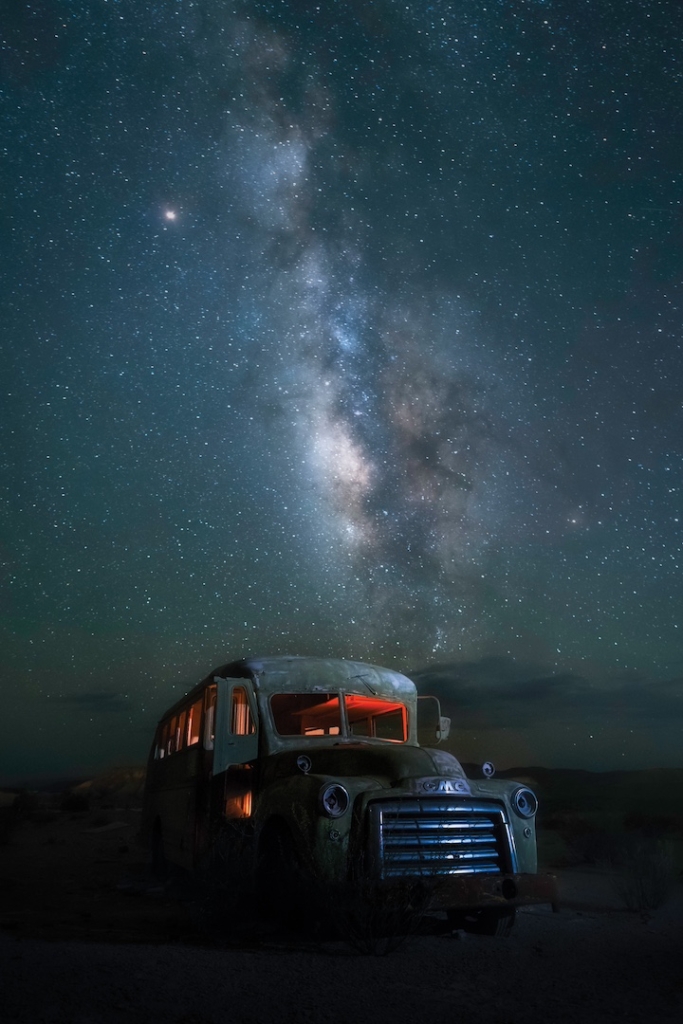
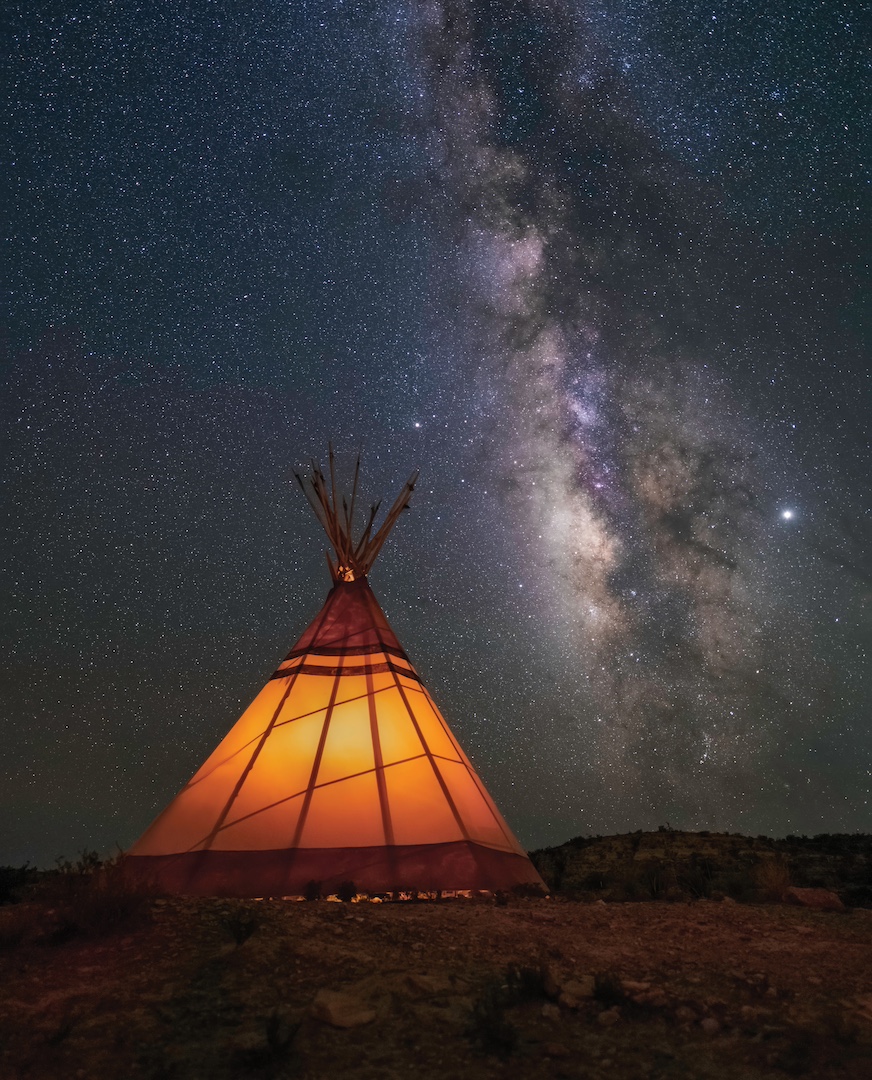
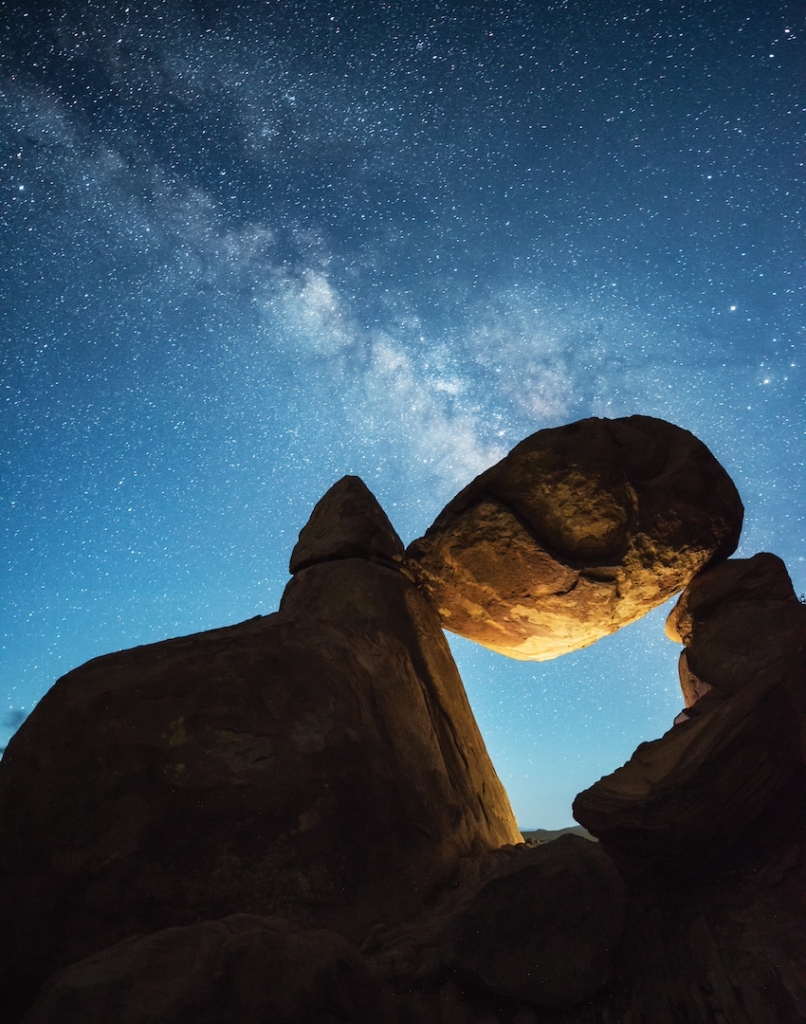
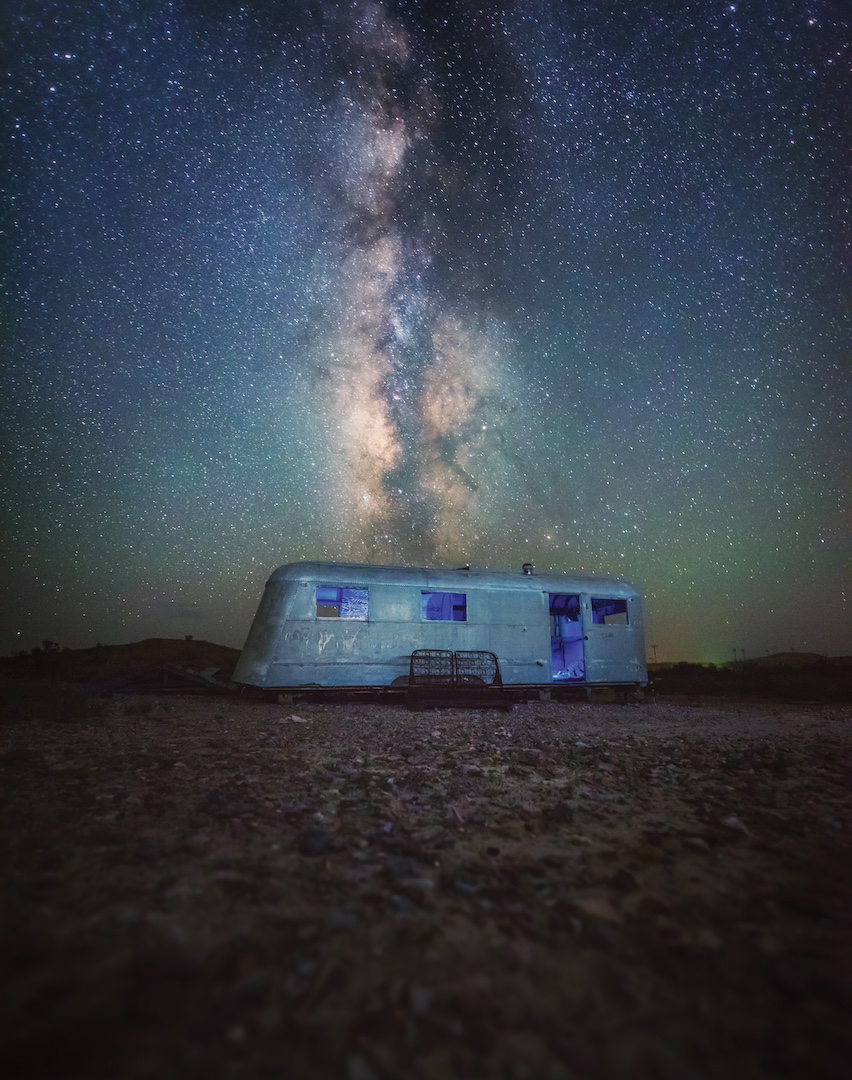
(From left to right) A bus beneath the night sky near Terlingua, Texas; a lit teepee near the Texas/Mexico border; Balanced Rock in Big Bend National Park under the Milky Way; and a trailer beneath the Texas night sky.
After sunset, Pegasus rises in the east, with the “Great Square” being particularly noticeable. In addition to Pegasus, the autumn sky features two notable hexagons: the “Circlet” of Pisces and the “Head of the Whale” in Cetus. With the lengthening nights, summer constellations like Cygnus the Swan and Aquila the Eagle remain visible well into the fall.
The Big Dipper, one of the most recognizable star patterns, is at its lowest point in the sky during autumn, making it harder to spot. In contrast, Cassiopeia, known as the Big W, becomes more prominent, rising high in the northern sky. Similar to Pegasus, Cassiopeia’s stars have different meanings across cultures: a spider to the indigenous tribes of Arizona, a whale’s tail to Pacific Islanders, a camel in Egypt and antlers to the Scandinavian people.
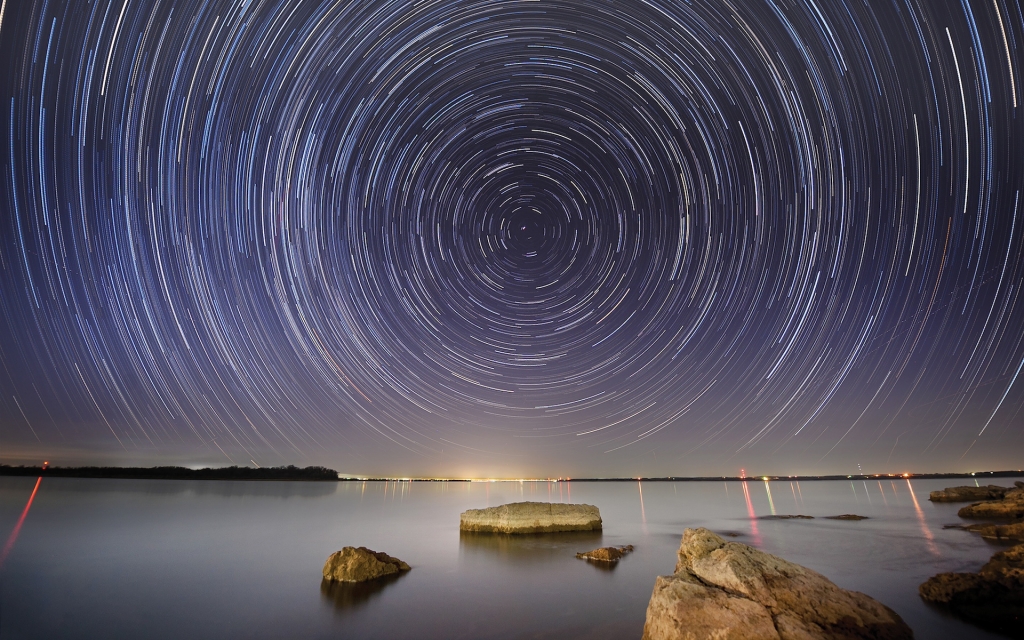
An hour-long “star-trail” displays the apparent motion of stars in the night sky due to the Earth’s rotation.
THE MYSTICAL MILKY WAY
As darkness falls, the Milky Way emerges from the constellation Sagittarius on the eastern horizon. This glowing band of patchy light is our home galaxy, which contains over 300 billion stars each with its own solar system. The Milky Way stretches through the Summer Triangle, an asterism formed by the bright stars: Vega, Deneb and Altair.
To see the Milky Way, you must have truly dark skies. Skies are darkest near the new moon, when the moon is not in the nighttime sky at all. You’ll also need to distance yourself from artificial light, including everything from porch lights to your cell phone. Allow your eyes about 20 minutes to adjust to the dark, and you’ll be able to see even finer detail in our galaxy’s structure including light and dark patches formed by giant conglomerations of glowing gas and obstructive dust. Experience the Milky Way in its full splendor by seeking out “dark sky” destinations like national parks and coastlines, far from artificial light.
Dark Sky Destinations
By Drew Mailloux
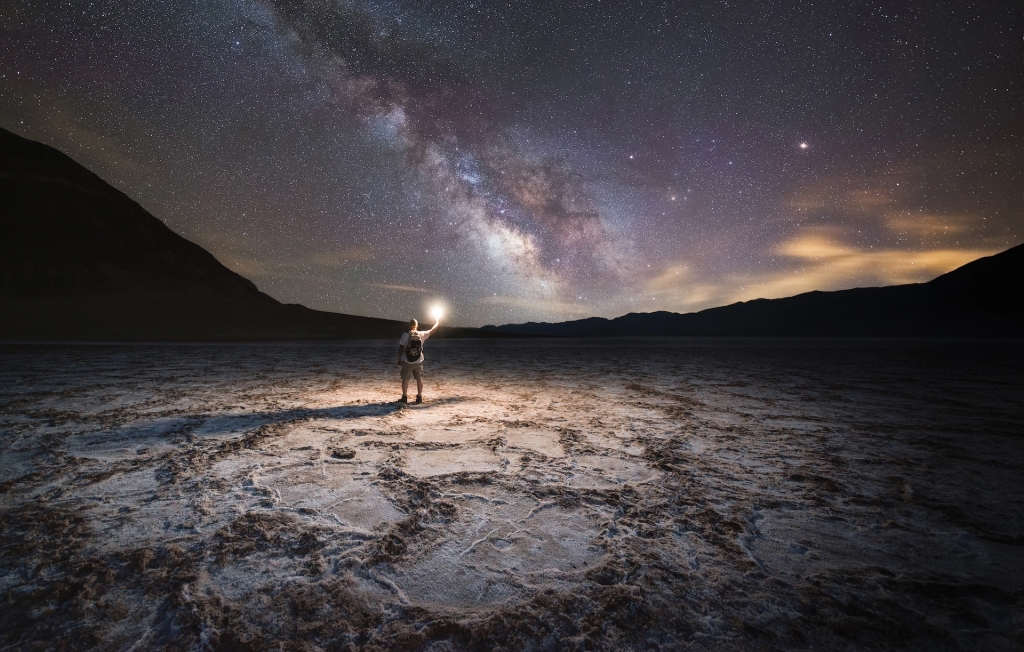
The Salt Flats at Death Valley National Park
Deep within Death Valley National Park lies one of America’s natural wonders: total darkness. This unique characteristic makes Death Valley a top choice for stargazing enthusiasts. Each year, the Dark Sky Festival at Death Valley celebrates this environment through stargazing sessions, astronomy talks and workshops on night sky photography. Recognized as a Dark Sky National Park in the U.S. by the International Dark Sky Association, Death Valley owes its status to The Oasis at Death Valley and the efforts of the National Park Service to reduce light pollution. The Oasis at Death Valley has taken steps to minimize lighting leading to Death Valley being designated as a “Gold Tier” Dark Sky Park. Visitors can partake in guided tours of the night sky led by astronomers, gaze through telescopes at wonders and learn about why preserving dark skies is crucial.
Located in the Chihuahuan Desert, along the Rio Grande, Big Bend National Park in Texas is recognized as another Dark Sky Park. Similar to Death Valley, visitors can enjoy views of the Milky Way galaxy and countless stars on clear nights.
SEEING SATURN AND JUPITER, THE GAS GIANTS
For the next several years, Saturn will dominate the autumn sky, appearing to the south as a yellow star. Saturn will be found near the constellation Pisces. Even with a small telescope, you’ll be treated to Saturn’s mesmerizing rings. Unlike the Milky Way, you don’t need dark skies to see Saturn—with your eye, or with a telescope, it will look just as good from the city as it will from a dark beach on the Atlantic Coast.
The planet Jupiter will be found near the winter constellations Tauris and Orion over the next few years, but that doesn’t mean you can’t see it in the fall, you may just need to wait until well after midnight for it to rise above the horizon. Jupiter is brighter than Saturn, and any small telescope will reveal its four Galilean moons.
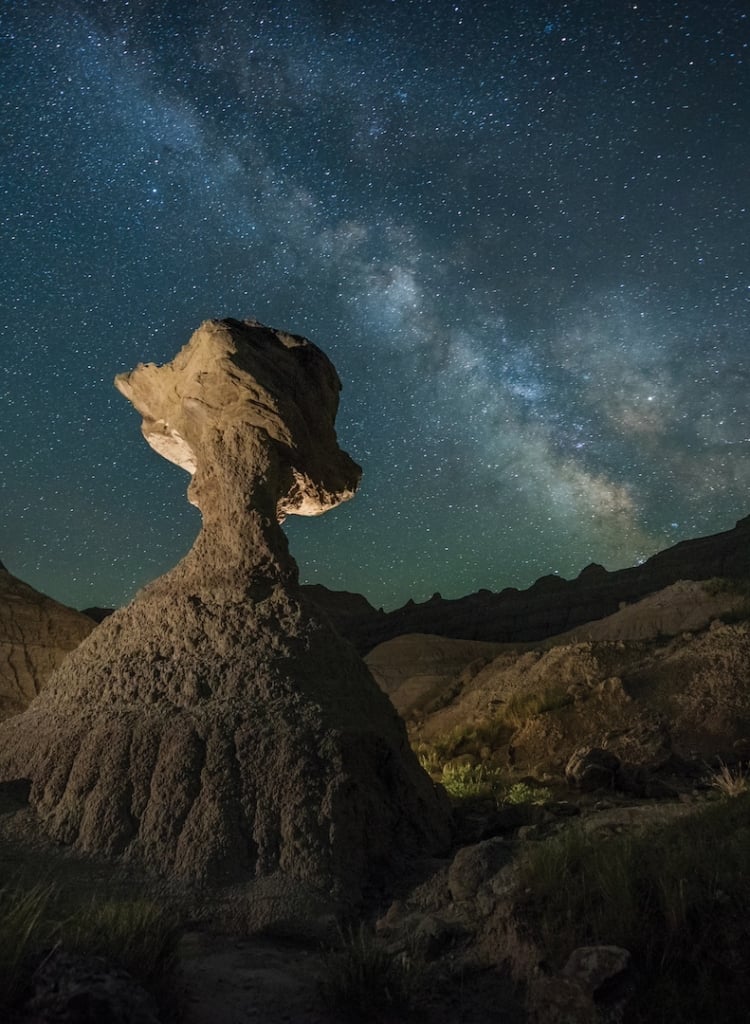
A lone rock structure rises against the night sky in Badlands National Park. (By Nikon Ambassador, Mike Mezeul II)
BINOCULAR STARGAZING
Using binoculars for astronomy is one of the most underrated aspects of the stargazing hobby. To use binoculars for stargazing, first adjust the central hinge so that you see a single circle with both eyes (not two circles as seen on television). Focus the binoculars by observing a bright star and adjusting the focusing hinge until the star is as small as possible. If your eyes have different prescriptions, one of the binocular’s eye cups will rotate to accommodate this. To find targets in the sky, first identify your target with your eyes and point your head directly at the object. Then slowly bring the binoculars up to your eyes. Your target should begin to fill your field of view.
Some astronomers might tell you that the Andromeda galaxy, which appears six times as wide as a full moon, is the best binocular target in the autumn sky, but there is another target that is even more impressive and easier to observe. Located below Cassiopeia is the Alpha Perseid Cluster. This dense patch of stars fills multiple binocular fields of view. Within it, there is a pattern of stars known to amateur astronomers as the “Christmas Goose,” a term coined by astronomer Gary Seronik.
BY THE MOONLIGHT
When stargazing, it’s important to be aware of the moon’s phase, since the moon illuminates Earth’s atmosphere, and obscures our view of the stars.
A few days after the new moon (when the moon isn’t in the night sky at all), you can observe a crescent moon with earthshine, where light reflected off Earth illuminates the moon at night. As the moon reaches its first quarter, it rises around noon and sets around midnight. With each passing day, the moon will rise a little later and be a little fuller. During the gibbous phase, the moon is nearly full, and it’s often possible to walk by its light. Be sure to look for your moon shadow. After the full moon, the phases “wane” back down through waning gibbous, third quarter and waning crescent, returning again to the new moon, when the cycle starts all over again.
SHOOT FOR SHOOTING STARS
Late autumn is the best time of year for meteor watching. Meteors, are bits of space dust that burn up, producing brilliant “shooting stars,” as they enter the atmosphere. Meteor showers are best viewed around midnight, during the new moon. You don’t need to look anywhere in particular; just make sure the skies are clear and dark.
Peaking in mid-October, the earliest visible meteor shower is the Draconids, you should expect to see about one shooting star about every 10 minutes. The Orionids peak near the end of October, while the Leonids run throughout the month of November. The most famous meteor shower, the Geminids, peak in December and promise at least one shooting star per minute under dark skies.
As you can see, there is a lot to observe in the skies this autumn. As the famous astronomer Helen Sawyer Hogg (1905-1993) used to say, “The stars belong to everyone,” which is true in a sense, but only for the lucky few who are able to truly see them. If you find yourself under dark skies this autumn, be sure to look up, you’ll be sure to see something amazing.
Goodnight Moon
By Drew Mailloux
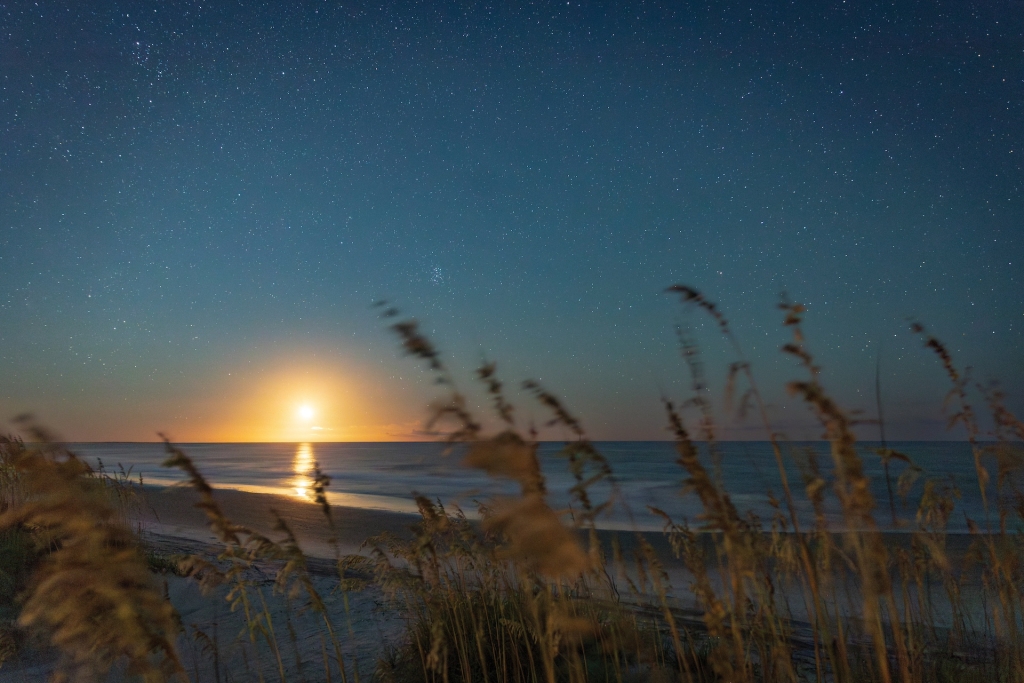
Moonlight illuminating Sea Island Beach
More than stargazers find the moonlight to be helpful for a midnight stroll. Sea turtles, also known as “phototactic” animals, are attracted to light and use it to navigate. When they hatch from their nests at night, they instinctively head towards the brightest direction, which is usually the horizon over the ocean.
“The moon’s reflection off the water is especially helpful on nights with no clouds,” said Haley Rogers, Lead Naturalist at Sea Island, “but it may be less effective on nights with little moonlight.” Sea turtles are especially attracted to short wavelengths of light, such as those in the violet and blue spectrum of moonlight.
“Artificial lights like streetlights, regular flashlights or beachfront lighting can confuse hatchlings and make it difficult for them to find their way to the ocean,” continues Rogers, “which is why we only carry red-light flashlights for all of our sea turtle programming.”
A healthy nesting habitat, such as Sea Island Beach, is pivotal for sea turtle hatchlings as they make the first part of their journey from the nest to the ocean during migration. Throughout hatching season, May through October, sea turtles “imprint” their home beach on them. When a turtle reaches adulthood, they will return to the same beach where they hatched to lay nests, generation after generation.




